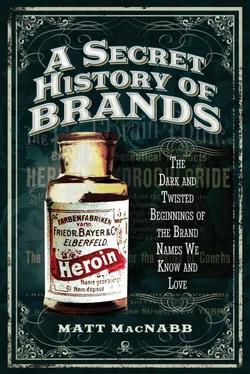Sudden change in disposition is a sign which may well arouse suspicion. If a boy who has previously been cheerful, pleasant, dutiful, and gentle, suddenly becomes morose, cross, peevish, irritable, and disobedient, be sure that some foul influence is at work with him. When a girl, naturally joyous, happy, confiding, and amiable, becomes unaccountably gloomy, sad, fretful, dissatisfied, and unconfiding, be certain that a blight of no insignificant character is resting upon her. Make a careful study of the habits of such children; and if there is no sudden illness to account for the change in their character, it need not require long deliberation to arrive at the true cause; for it will rarely be found to be anything other than solitary indulgence.
Failure of mental capacity without apparent cause, should occasion suspicion of evil practices. When a child who has previously learned readily, mastered his lessons easily, and possessed a retentive memory, shows a manifest decline in these directions, fails to get his lessons, becomes stupid, forgetful, and inattentive, he has probably become the victim of a terrible vice, and is on the road to speedy mental as well as physical ruin. Watch him. Untrustworthiness appearing in a child should attract attention to his habits. If he has suddenly become heedless, listless, and forgetful, so that he cannot be depended upon, though previously not so, lay the blame upon solitary indulgence. This vice has a wonderful influence in developing untruthfulness. A child previously honest, will soon become an inveterate liar under its baneful influence.
Mock piety — or perhaps we should more properly designate it as mistaken piety — is another peculiar manifestation of the effects of this vicious practice. The victim is observed to become transformed, by degrees, from a romping, laughing child, full of hilarity and frolic, to a sober and very sedate little Christian, the friends think, and they are highly gratified with the piety of the child. Little do they suspect the real cause of the solemn face; not the slightest suspicion have they of the foul orgies practised by the little sinner. By the aid of friends, he may soon add hypocrisy to his other crimes, and find in assumed devotion a ready pretence for seeking solitude. Parents will do well to investigate the origin of this kind of religion in their children.
Boys in whom the habit has become well developed, sometimes manifest a decided aversion to the society of girls; but this is not nearly so often the case as some authors seem to indicate. It would rather appear that the opposite is more often true. Girls usually show an increasing fondness for the society of boys, and are very prone to exhibit marked evidences of real wantonness.
Lack of development of the breasts in females, after puberty, is a common result of self-pollution. Still it would be entirely unsafe to say that every female with small mammary glands had been addicted to this vice, especially at the present time, when a fair natural development is often destroyed by the constant pressure and heat of “pads.” But this sign may well be given a due bearing.
Biting the fingernails is a practice very common in girls addicted to this vice. In such persons there will also be found, not infrequently, slight soreness or ulceration at the roots of the nails, and warts, one or more, upon one or both the first two fingers of the hand, usually the right.
The eyes often betray much. If, in addition to want of lustre and natural brilliancy, they are sunken, present red edges, are somewhat sore, perhaps, and are surrounded by a dark ring, the patient, especially if a child, should be suspected and carefully watched. It should be observed, however, that dyspepsia, debility from any cause, and especially loss of sleep, will produce some or all of these signs, and no one should be accused of the vice upon the evidence of these indications alone; neither could he be justly suspected so long as his symptoms could be accounted for by legitimate causes.
These are, of course, only a few of the thirty-nine examples that Dr Kellogg provides. Upon reading the entire list it becomes clear that almost everything is a sign of self-abuse to Kellogg. It encompasses everything from round shoulders and paleness to acne and tobacco use. The list even contradicts itself at times by listing both boldness and bashfulness as potential signs. We know, of course, that symptoms like acne are brought on by puberty and hormones. It’s hard to imagine how one man’s preoccupation with self-abuse could change the world, but this path would leave Dr Kellogg in search of a remedy to help those that he felt were in dire need of assistance.
The creation of the Corn Flake
In 1877 Kellogg created the Sanitarium Health Food Company to develop and sell his vegetarian products. He and his brother William spent countless hours creating various foods and trying out ideas, such as Protose, a meat substitute that consisted mostly of peanuts and wheat gluten. One included NutButter, an early form of peanut butter, in which he would boil the nuts instead of roasting them. Kellogg was granted a patent specifically for the ‘Process of Producing Alimentary Products’ in 1898.
The need to deal with the unclean acts of sexuality and masturbation was a great weight on the mind of Dr Kellogg, so he and his younger brother went to work to create a special food that would satisfy the hunger of their patients, while dulling their sexual appetites. One food that the Kellogg brothers tried on the patients of The San was a form of shredded wheat. The concept of shredded wheat cereal was actually invented in 1890 down in Denver, Colorado, by a man named Henry Perky. Perky sold his dry, pillow-like biscuits to vegetarian restaurants and eventually expanded into distribution and production on the east coast of the United States by 1892. Kellogg was a purchaser of shredded wheat as an option for his patrons at The San, but the reception from the patients was unfavourable, judging it far too bland, so he never purchased the patent from Perky. William Keith would later purchase the patent when he split from his brother to create the Battle Creek Toasted Corn Flake Company.
The Kellogg brothers were determined to develop a flake cereal that offered significantly more taste, but was conducive to John Harvey’s biologic living philosophy. It was hard for the brothers to get their flake-style cereal to take shape. In 1894, Corn Flakes were finally created and it was very much by accident. William had left for a few days to deal with his creative frustrations and think; when he returned, the batter they were using was mouldy, so he gave the crank a turn and out came the flakes. It turned out that the mould had given the batter the rise that it needed to form properly. The first flakes were made from wheat, but the concept would also work on rice, oats, and corn. William Keith stumbled upon the process, but John Harvey would claim the idea, insisting that it had come to him in a dream. The toasted flakes were to be sold exclusively to The San patients, and subscribers to their wellness magazine. The Kellogg brothers filed for a patent on 31 May 1895. The patent for ‘Flaked Cereals and Process of Preparing Same’ was granted on 14 April 1896.
It was quite clear early on that William Keith had aspirations to market their Corn Flakes product on a wider scale, but John Harvey was adamantly against the idea and forbade it. This was a divide that would change the relationship of the Kellogg brothers. The business sense of William Keith was in direct contradiction with the passion and dedication that John Harvey had to his beliefs.
Fate is a funny thing, to be sure. It turns out that Charles W. Post, the man who started the still prolific Post Cereal Company, was a regular at the Sanitarium. Starting in 1891 Post lived for extended periods at The San off and on for many years. It was while he was there that he saw the immense potential in the products being offered to patients. Prior to his ventures into cereal, Post was largely unsuccessful as a businessman. He created his own product called Postum, a coffee substitute, after observing the experiments and creations at The San. Kellogg didn’t mind Post coming there and poaching their ideas, because he was far too concerned with his mission. Post would soon market Grape Nuts, which became a commercial success; he had made his first million by 1901 and his wild success became an annoyance to Dr Kellogg. Post had exceeded any expectations that Kellogg had had of him, and John Harvey would call Post an imitator of his ideas.
Читать дальше












